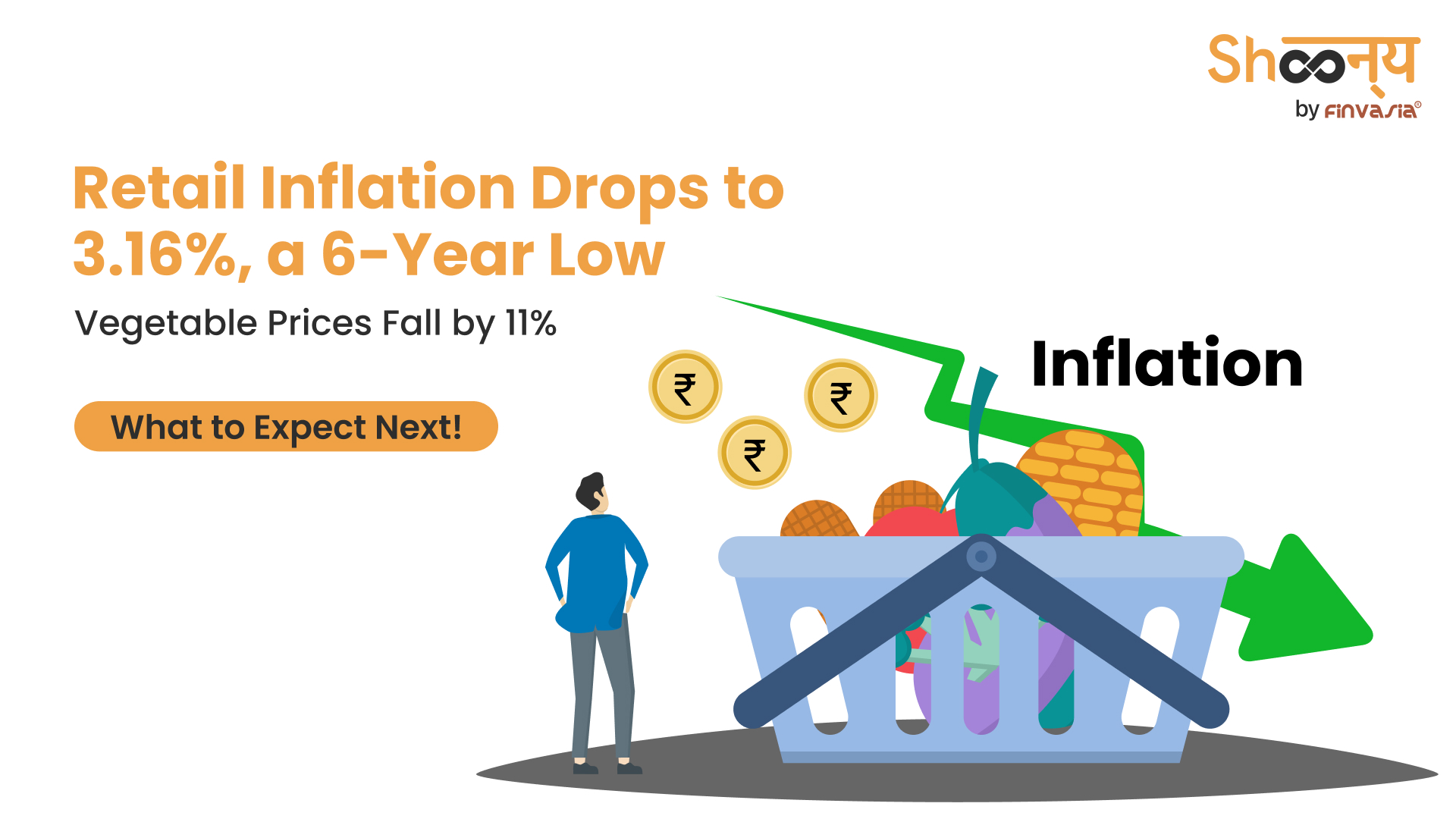Retail Inflation Drops to 3.16% in April, Lowest Since July 2019

There’s good news for everyone! Retail inflation in India has hit a six-year low, and that’s something to cheer about.
According to the latest reports, the retail inflation rate dropped to 3.16% in April, the lowest since July 2019. With food prices cooling down, especially vegetables and pulses, your monthly budget might finally breathe a little easier.
With this, experts now expect a possible rate cut from the RBI in June.
India’s retail inflation rate eased to 3.16% in April 2025, down from 3.34% in March, according to government data released on Tuesday. This marks the lowest year-on-year inflation recorded since July 2019. Thus giving a positive signal for the country’s economy.
What is Retail Inflation?
Retail inflation, also known as Consumer Price Index (CPI) inflation, reflects the change in prices of a standard basket of goods and services that consumers commonly buy. A lower inflation rate means prices are rising more slowly. This is generally good news for households.
Food Inflation Comes Down in April
One of the main reasons behind this drop in retail inflation is the slower rise in food prices. In April, food inflation fell to 1.78%, compared to 2.69% in March. This means food items have become more affordable than before.
Among food items:
- Vegetable prices saw a sharp decline of 11% year-on-year, compared to a 7.04% fall in March.
- Prices of cereals increased by 5.35%, which is slightly lower than the 5.93% rise recorded in March.
- Prices of pulses dropped significantly by 5.23%, compared to a 2.73% drop in March.
The decline in food prices has played a key role in pulling down the overall inflation number for April.
Retail Inflation and Food Price Data – April 2025
| Indicator | April 2025 | March 2025 | Change/Remarks |
| Retail Inflation (CPI) | 3.16% | 3.34% | Lowest since July 2019 |
| Food Inflation | 1.78% | 2.69% | Significant drop |
| Vegetable Prices (Year-on-Year) | -11.00% | -7.04% | Sharper decline |
| Cereal Prices (Year-on-Year) | +5.35% | +5.93% | Slightly lower rise |
| Pulses Prices (Year-on-Year) | -5.23% | -2.73% | Larger fall |
| RBI Key Interest Rate Change Expected | 25 basis points (0.25%) | — | Expected in June 2025 |
| Inflation Forecast (FY 2025-26) | 4.00% (average) | — | As projected by RBI |
Experts See Scope for RBI Rate Cut
Experts believe that this steady drop in inflation, especially in food prices, could lead to a change in the Reserve Bank of India’s monetary policy.
A well-known market analyst noted,
Inflation inched down to 3.16% in April on the back of a continuous broad-based drop in food prices, including vegetables, cereals, and pulses. The CPI print today sets the stage for another rate cut by the RBI in its June meeting of 25 basis points.
A basis point is a unit of measurement used in finance. One basis point equals 0.01%. A 25 basis point cut means the RBI could lower interest rates by 0.25%.
Many economists believe that inflation will remain close to 3% in the next two months, helped by expectations of a good monsoon and low global commodity prices. These factors are likely to help maintain stable prices throughout the year.
Three Months of Inflation Below 4%
April is basically the third month in a row where inflation stayed below 4%, showing a consistent slowdown. According to experts, while food prices did not fall as sharply in April due to changing weather patterns, the month still showed better control over rising prices compared to last year.
RBI’s Inflation Target
The Reserve Bank of India is responsible for maintaining inflation around 4%, with a tolerance of 2% on either side, meaning between 2% and 6%. Since the price situation has improved, the central bank has already reduced key interest rates by 50 basis points in two phases.
For the financial year 2025-26, the RBI has forecasted CPI inflation as follows:
- Quarter 1 (April–June) – 3.6%
- Quarter 2 (July–September) – 3.9%
- Quarter 3 (October–December) – 3.8%
- Quarter 4 (January–March) – 4.4%
The overall inflation in India for the full year is expected to average 4%.
Conclusion
This ongoing fall in retail inflation, especially with food prices coming down, is a hopeful sign for both consumers and policymakers. It not only makes essential goods more affordable but also gives the RBI more room to adjust interest rates to support economic growth.
Source: MoneyControl
______________________________________________________________________________________
Disclaimer: Investments in the securities market are subject to market risks; read all the related documents carefully before investing.








